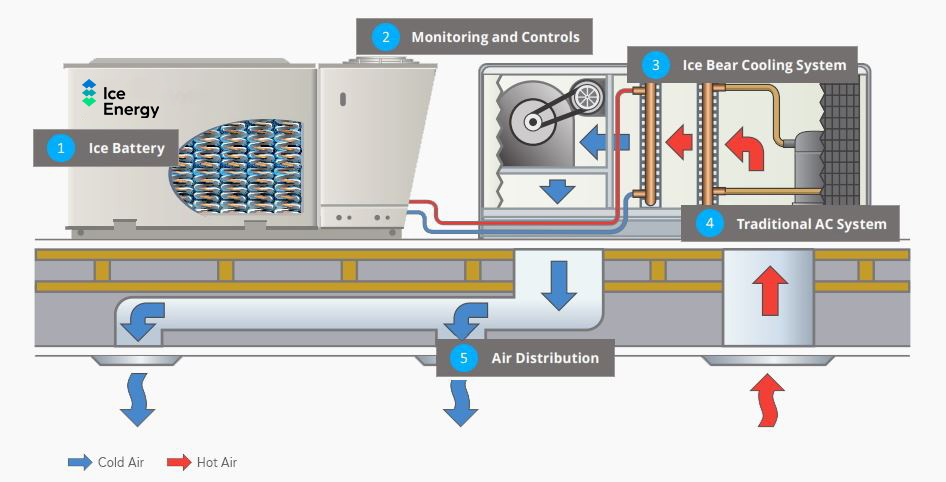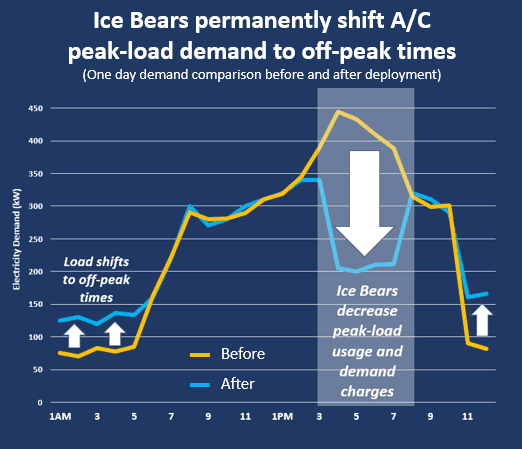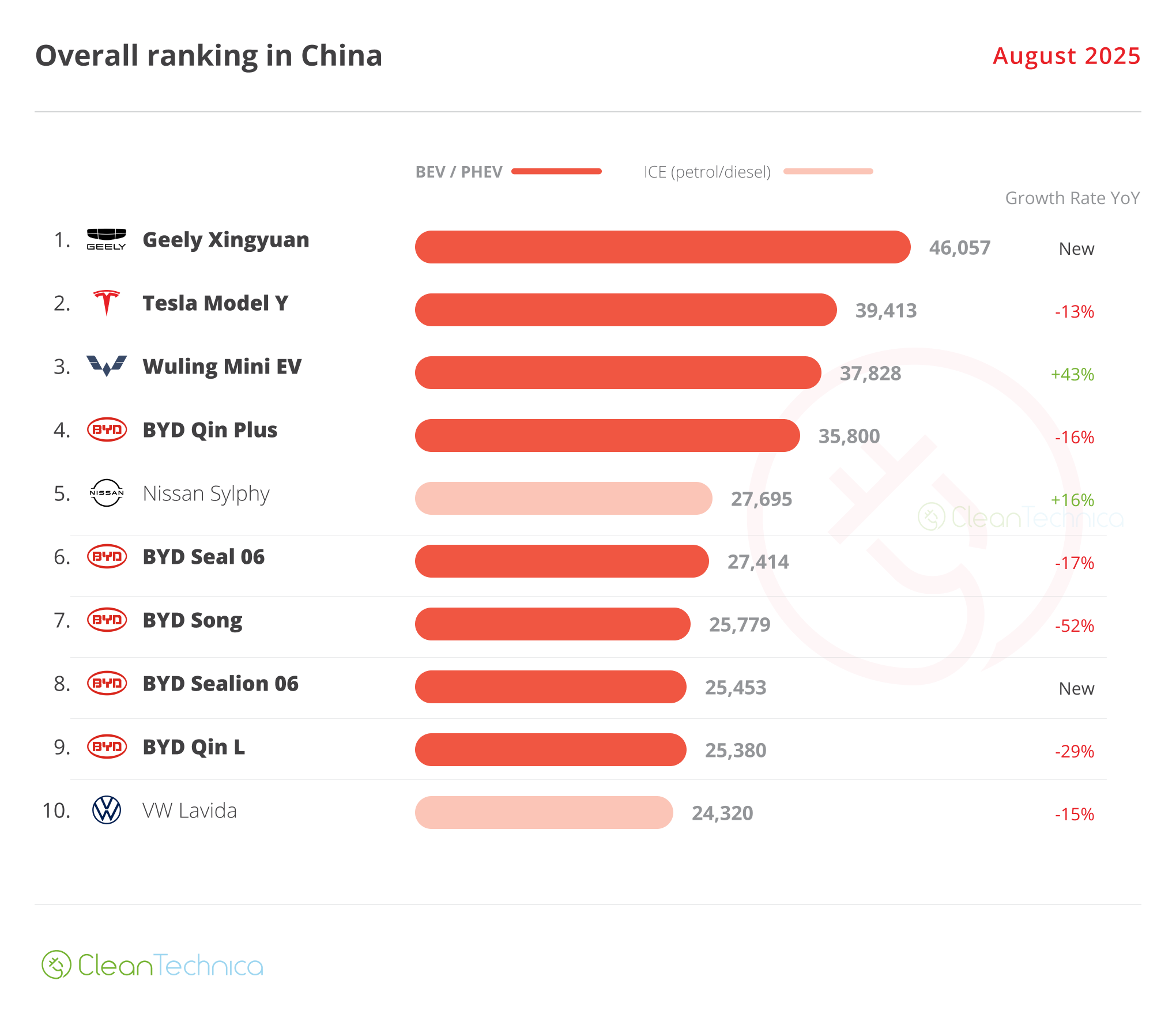Sign up for daily news updates from CleanTechnica on email. Or follow us on Google News!
Thermal energy storage company Ice Energy has a 25.6 MWh utility-scale energy storage program in the Southern California Edison (SCE) utility district. It’s been in operation for five years and is spread out across 100 customer sites. It’s part of the Southern California Virtual Power Plant (“VPP”) Thermal Storage Project. Ice Energy has just announced that this decentralized program has provided more than 45 GWh across those five years.
In addition, customers in this VPP program have reportedly saved 20% on utility bills thanks to Ice Energy. They get more electricity when there’s less demand and costs are lower and use that electricity to freeze ice, and then they rely on that ice to cool their homes or businesses when electricity demand is higher and more costly. The system can cut electricity demand during periods of peak cooling need by 95% for as much as 8 hours a day.
“Ice Energy’s two Ice Bear products — the Ice Bear™ for commercial and industrial settings, and the Ice Cub™ for small commercial and residential applications — integrate seamlessly with cooling systems and come equipped with a smart-grid controller and bi-directional communications to give real-time visibility and control. Individual units, custom groupings or entire fleets can be dispatched to shift and optimize cooling loads in a virtual power plant configuration,” the company explains.
Interestingly, and logically if you think about it for a moment, these storage systems don’t require any special grid connection. These are behind-the-meter systems. It’s the aggregated behavior by the organizing company, in this case Ice Energy, that makes it so useful. Ice Energy adds that it takes just a few weeks to set up the system. The tech is expected to have a 20-year useful life.
Getting back to California, “Ice Energy’s Ice Bear™ has also helped reduce strain on the grid through load-shifting across Southern California’s 100 sites in Orange County.” They add that this thermal energy storage and increased grid flexibility also lets SCE integrate more renewable energy into the grid.
“Increasing electricity demand during peak cooling times is straining California’s electrical grid,” said Joe Raasch, Director of Operations at Ice Energy. “By 2050, the IEA predicts that one-third of peak electricity demand will be for air conditioning which has been cited as a contributor to blackout events. At Ice Energy, we are proud to support the efficient, consistent functioning of Southern California’s power grid while supporting the deployment of renewable energy and look forward to continue working together with Southern California Edison on this important program for years to come.”
“The Ice Bear is an example of a climate technology that can solve the energy transition needs of today,” added Brice Soucy, Board Member of Ice Energy and Senior Director at Argo Infrastructure Partners. “The successful deployment of our VPP with SCE has been transformational by creating value for both SCE and our customers and we look forward to partnering with utilities across California and beyond to implement similar programs.”
Who would have thought that something as simple as freezing water and then using the cool temperatures from the melting ice later on would be such a useful solution for the grid in 2024?
All images courtesy of Ice Energy

Chip in a few dollars a month to help support independent cleantech coverage that helps to accelerate the cleantech revolution!
Have a tip for CleanTechnica? Want to advertise? Want to suggest a guest for our CleanTech Talk podcast? Contact us here.
CleanTechnica uses affiliate links. See our policy here.
CleanTechnica’s Comment Policy







